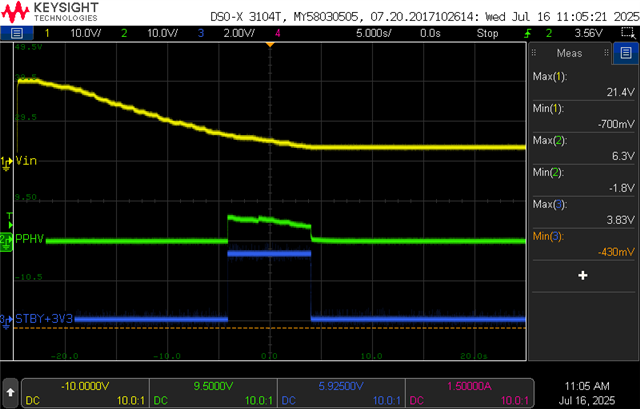Tool/software:
Hi TI support team,
I have some experiment to try with TPS25730DREFR. The idea is to use a external supply to power up instead of usb-c cable and vary a voltage level to see at what voltage a DUT will cut-off.
But my issue is the sink path is flow only in a range of around 3.6V-6.6V, refer to my result below even though my ADCIN config is 5V -20V and everything working just fine with a usb-c power adapter.



Note : STBY+3V3 is a VCC for local MCU.
My question is what could be a factor that block the internal FET and how can it's work at a 3.8V - 6.5V range?
Regards
Nitipong


